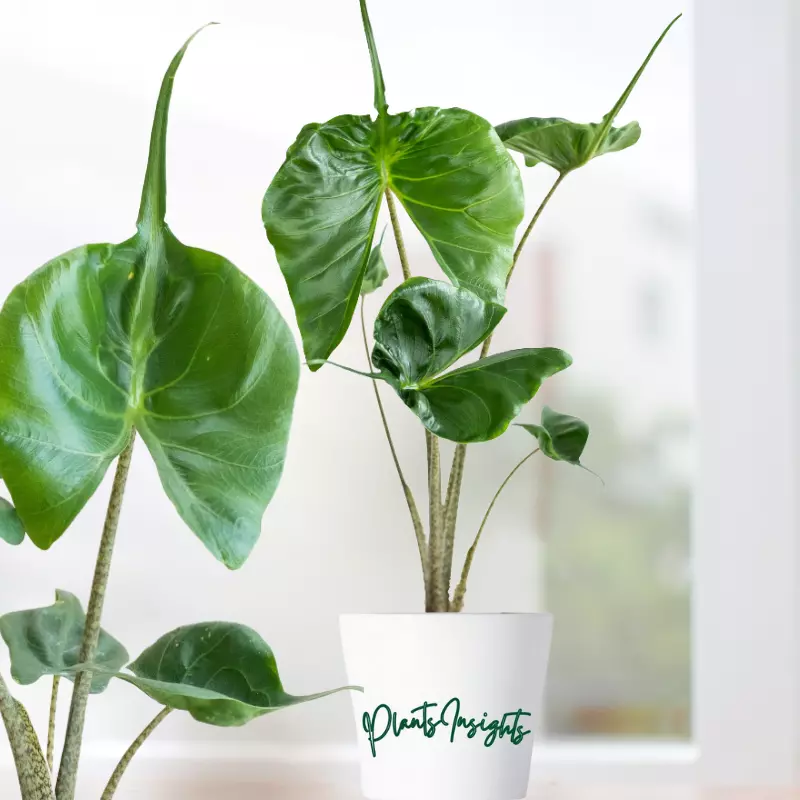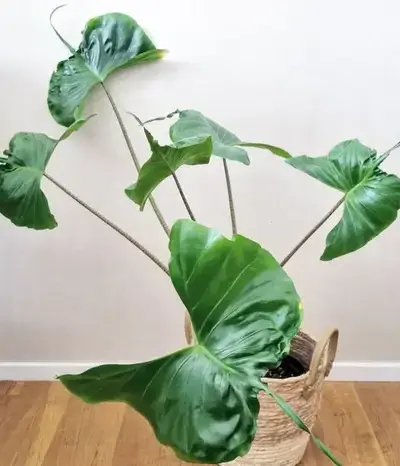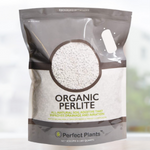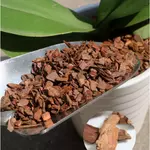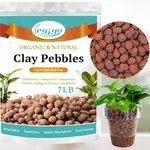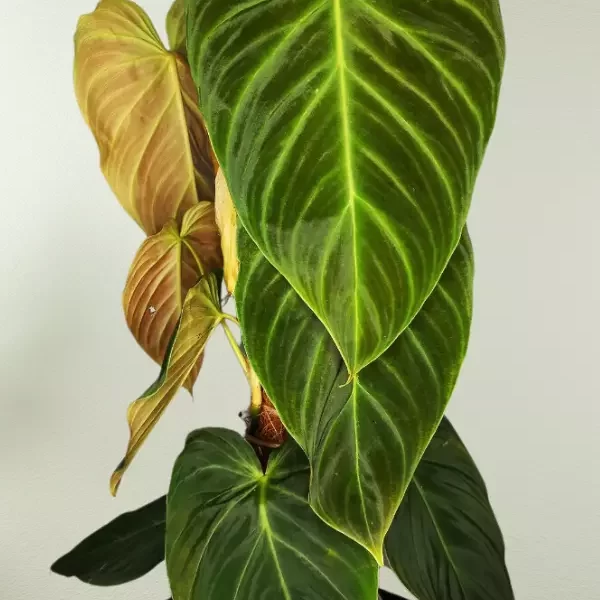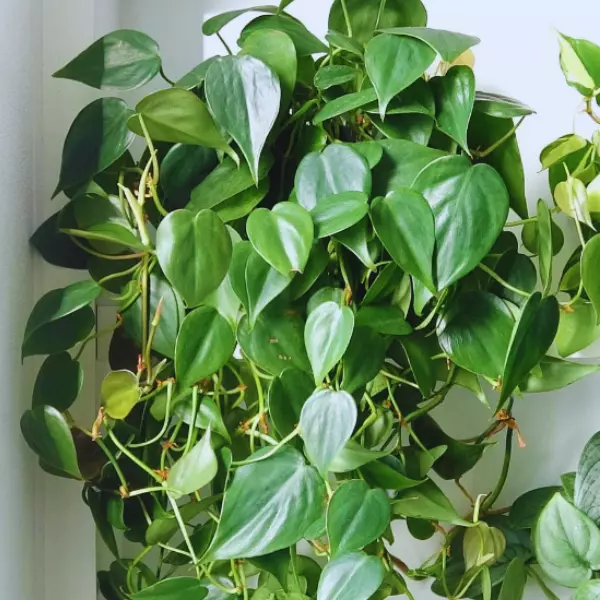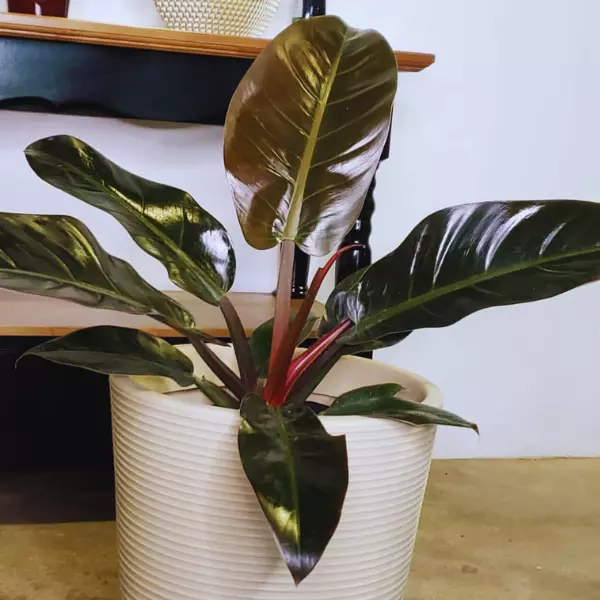The odd and unusual Alocasia Stingray possesses foliage having a rough appearance and are pointed upward, just like the tail of a Stingray. The zeal and vigor of Stingray Plant, which is already striking, grow even more as they age. They have stems that are similarly thick and striped with zebra patterns as those of Alocasia Zebrina. The plant can reach a height of between 8 and 10 feet.
The Alocasia Stingray is a native species found in South-East Asia’s humid and warm areas. Alocasias are also well-known for their capacity to effectively clean the air in their surroundings. You will not only have an attractive display of plants, but you will also have an ornamental plant that cleans the air of toxins and other potentially harmful substances.
Allied Species: Alocasia Sarian, Alocasia Pink Dragon, Alocasia Lauterbachiana, Alocasia Silver Dragon, Alocasia Nebula, Alocasia Polly, Alocasia Dark Star, Alocasia Portora, Alocasia Cucullata, Alocasia Cuprea, Alocasia Maharani
Related Products:
Habitat & Ecology
| Botanical Name: | Alocasia Stingray |
| Family Name: | Araceae |
| Common names: | Alocasia Stingray, ‘Macrorrhizos’, Elephant Ear |
| Plant type: | Tropical flowering perennial plant |
| Origin: | South-East Asia |
| Height: | 1-1.2m tall |
| Humidity: | 50%-70%. |
| Temperature: | 64°F-72°F |
| Light Need | Bright, indirect light |
Care Difficulty
These plants are hungry for nutrients during the growing season and produce the most luxuriant foliage if fed regularly. Stingray is a plant that thrives in dappled shade. Even though Alocasias have a reputation for being difficult to care for, the Alocasia Stingray requires less attention than other plant varieties. A rich soil that is damp (but not soaked) and has good drainage is essential for growing Alocasias.
How do you take care of Alocasia Stingray?
Alocasia Stingray is classified as perennials when grown in warm and humid regions, such as their Native Southeast Asia. Therefore, please place the plant in a dappled shade.
When growing inside, use light that has been filtered. Additionally, please ensure there is a lot of humidity available to plant.

Initial Care at Home
High humidity and bright, indirect light are ideal growing conditions for the Alocasia Stingray. Furthermore, please maintain the soil evenly moist and well drained. As explained earlier, Stingray The plant is not tricky to take care of; however, new gardeners may find it challenging to fulfill the plant’s requirements consistently.
When the Alocasia Stingray begins to push out new growth, it will require more water because it uses more energy. Don’t be alarmed if the plant loses a few leaves when you first bring it home. It will acclimate to its new surroundings. If Stingray is dropping a lot of her leaves, it could indicate that it is preparing for further growth. It grows quickly and has a high leaf turnover.

Lighting Requirements
The Stingray Alocasia dislikes direct light. Direct sunshine will burn its leaves over time. Scorched leaves are yellowed or brown. As a result, it must be set in an area that receives bright and indirect sunlight. You may keep an indoor-grown plant in a filtered light area near a lightly curtained south or west-facing window. While placing your Alocasia Stingray indoors, please ensure it can enjoy abundant indirect light.
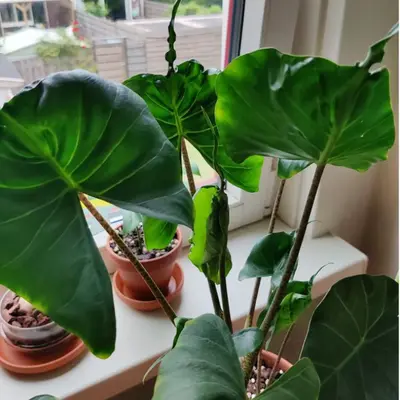

Watering
Being native to tropical rainforests, Alocasia Stringray demands abundant water; however, too much water might cause root rot if the soil remains waterlogged for longer durations. That is why you should never submerge your Stingray in water (e.g., standing water in the saucer).
It is safe to rewater the plant until the top one inch of soil feels dry to the touch. Please remember to water your Alocasia Macrorrhiza Stingray regularly, but not excessively. A well-draining potting soil and a pot with adequate drain holes ensure excellent drainage and keep the roots from sitting in water.
During the winter, you should water your plant less frequently because the plant is in dormancy, and the water requirement reduces. Furthermore, the lower temperatures also help to retain moisture for a prolonged period.

Humidity and Temperature
The Alocasia Stingray thrives in high humidity settings. It is difficult to achieve the optimal humidity that the Stingray plant demands, especially during the winter. The Stingray plant struggles in such scenarios. You can get a hygrometer to see whether the air in your home is suitable for your Stingray plant. Alocasia tolerates moderate humidity of roughly 50% but thrives and grows quicker in greater humidity of 70% or higher.
The Alocasia Stingray is not a hardy plant. The Stingray plant thrives in warm climates with temperatures ranging from 64 F to 72 F. Therefore, please provide the plant indoors with suitable temperatures. Furthermore, the Alocasia Stingray doesn’t tolerate cold draughts very well. Therefore, please keep it away from windows in winter and AC cold drafts in summer.
The Alocasia Stingray also cannot withstand extreme heat. The dried, crispy edges of the plant leaves indicate that your plant has been exposed to exceptionally high temperatures.

Soil Requirements
One of the most vital aspects of Stingray The plant is to select the right soil mix. It thrives best in sandy, weed-free, aerated, and well-drained soil. Poor water drainage from the soil can cause fungal diseases and lead to root rot.
A good mix consists of equal quantities of peat moss, coarse potting sand or Perlite, and a high-quality houseplant Potting soil. If you do not intend to make your soil mix, you can purchase a ready-made suitable soil mix.
You can also plant your Alocasia Stingray is soilless medium such as LECA Clay balls.
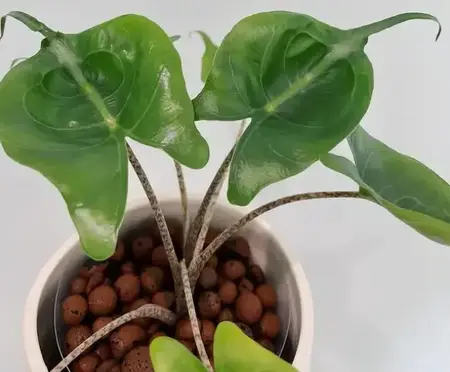
The ‘Stingray’ favors moderately acidic soil with a pH between 5.5 and 6.5.
Recommended Products

Fertilizer
To boost the fertility of the soil when the plant is actively growing, work some compost into the top inch or two of soil without disturbing the plant’s roots. Fertilizing is most effective when the plant is actively growing. Every two or three weeks, give the plant a balanced, water-soluble fertilizer diluted to one teaspoon of fertilizer for every liter of water.
A soil rich in nutrients will encourage healthy root growth and the growth of your plant, resulting in several inches taller. When your plant grows quickly, it will need more nutrients. Please use a good quality, all-purpose liquid fertilizer or you may use a slow-release fertilizer that is specifically formulated for use with houseplants.

Repotting
There are numerous pots available, but your choice should be based on personal and plant preferences. However, there are a few factors to consider when selecting a container. While repotting, the new pot shall be one size larger than the existing one.
To begin with, do not repot your plant immediately after purchasing it. Before attempting to repot Alocasia Stingray plants, allowing them to acclimate to their new environment is essential. The repotting at a yearly frequency provides two benefits: you refresh the plant’s soil, and you can plant it in a larger pot to achieve continual growth.
You may wish to combine repotting with propagation to reduce the frequency of repotting. The ideal time to repot your plants is in spring and summer, as the plant is at its strongest during its growing season. Please place the root ball at the same depth every time. You shall also prune the yellow or sick leaves. The removal of plant debris improves the plant’s growth conditions.
Always use clean and disinfected tools when pruning and caring for your Alocasia Stingray.

Propagation
To increase the number of your Alocasia Stingrays, propagate the plant during the warm months of late spring and summer.
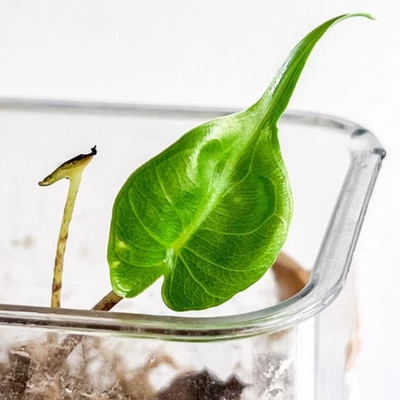
The standard propagation methods are through seeds, cuttings, offsets from the root stem, and rhizome division. However, the most prevalent way for Alocasia Stingray is offset from the root stem. This procedure begins by removing the original plant from its container and shaking off any excess soil from its roots.
The Alocasia Stingray roots grow in clumps, and upon close inspection, you can find the young plant offsets within theseclumps. You can easily detach these offsets from the man root ball and are ready for planting in new pots. After removing the offsets, plant them separately in pots and water deeply. Please be informed; It requires patience to propagate Alocasia Stingrays.
Another method of propagation involves dividing rhizomes with clean incisions. Please take out the plant from its pot and remove the extra soil to expose the roots and rhizomes. Each rhizome can develop into a new plant; therefore, carefully separate them from each other and plant them in new pots.
The transplant will shock your plant; it may take a few weeks before normal growth resumes. The emergence of gorgeous green leaves indicates successful propagation and new growth.

Cleaning and Pruning
Throughout the growing season, the plants are constantly producing new leaves. Please timely remove yellow or decaying leaves and plant residues to enhance improved growing conditions. Always prune with clean scissors or shears to prevent the spread of bacterial and fungal infections.
Please ensure to never cut through yellowed tissue because this might lead to the spread of diseases and bacterial infections. While cutting the leaves or a branch, please ensure to make a clean cut. A damaged wound will harm the plant’s health and cause stunted growth.

Toxicity
You may be wondering if the Stingray on your Alocasia was toxic. In response to your inquiry, we can confirm that the Alocasia Stingray is, in fact, poisonous. We recommend keeping it out of the reach of both children and animals because of the potential for the plant to cause illness in case of consumption.
Unfortunately, both humans and animals can become sick from consuming your plant if they do so. Like many other Alocasia family members, Oxalate crystals can pierce tissues, leading to skin irritation, nausea, and abdominal pains. It is strongly advised that you keep your plant out of the reach of children and animals.

Pests Diseases & Common Problems
The Alocasia Stingray, like most plants, is susceptible to a wide variety of parasites and diseases that have the potential to cause significant damage. Botrytis, also known as root or rhizome rot, and leaf spot are widespread diseases for the Stingray plant. These diseases can cause the discoloration of foliage, loss of leaves and stem wilting.
It is also essential to look for pests such as mealybugs, aphids, and spider mites. On the underside of the stunning leaves of the Alocasia, you can typically find these running along the midrib. Please start the treatment by manually removing the pests through wipe cleaning. You may apply neem oil or a 10% solution of rubbing alcohol. If the pests persist, wash the plant with an insecticidal soap solution.
FAQs
Should I remove the leaves of Alocasia Stingray?
Yes, it would be best to cut off the yellow Alocasia Stingray leaves. They are typically a sign of stress from over or under-watering, too much direct sunlight, or possibly cold drafts. Removal of yellow leaves will improve the plant’s outlook and direct the plant’s energy towards new growth.
Is Alocasia Stingray rare?
This is a large, elegant, and relatively expensive plant. Many individuals have referred to it as a rare plant due to its size and high cost.
How do you recognize an Alocasia Stingray?
You may immediately identify Alocasia Stingray by observing its leaves. The plant’s green leaves mimic the flattened bodies and long tails of Stingrays.
How to cultivate Alocasia Stingray outside?
Alocasia Stingray does not tolerate full sun; therefore, plan it under partial shade. Growing the Stingray plant under a tree canopy is the ideal setting that mimics its natural habitat.
How quickly does the Alocasia Stingray grow?
Outdoors, an Alocasia Stingray grows at a pace of 3 to 5 feet per year. It has a rapid growth rate. However, growth becomes moderate when grown indoors.
What is the height of the Alocasia Stingray?
When grown indoors, Alocasia Stingray achieves height up to 5 feet (150 cm). However, an outdoor one can grow to a height of 15 feet.
How can Alocasia Stingray grow more rapidly?
To achieve the rapid growth of the plant, grow it in moist soil, provide optimum light, and take care to provide warm temperatures and high humidity.
How can Alocasia Stingray be revived?
It’s time to examine the circumstances in your plant’s surroundings if you see that it is starting to show signs of stress. To make these circumstances better for plant growth, make the appropriate adjustments.
What is killing my Alocasia Stingray?
Pests may bring infections, nutrient deficiencies, lack of light and humidity, overwatering or under watering, and lack of light. There are numerous likely causes. Therefore you must start by looking into them.
Does Alocasia Stingray possess a smell?
None. You shouldn’t expect any aroma from this plant. If it happens to be suffering from root rot, it could emit a disagreeable smell.
Related Posts
Philodendron Melanochrysum Care & Growing Guide
Philodendron ‘Splendid’ is a stunning hybrid of two stunning species of the Araceae family: Philodendron Melanochrysum and Verrucosum.
Philodendron Burle Marx Care & Propagation Guide
The most notable feature of the Philodendron Burle Marx is its large, glossy leaves, which come in heart-shaped or arrow-shaped variations.
Philodendron Scandens-“Sweetheart Plant” Easy Care Tips
Philodendron Scandens, often called the “Heartleaf Philodendron” or the “Sweetheart Plant” is a classic and most loved trailing houseplant.
Philodendron Erubescens ‘Imperial Red’ Care Tips
The Imperial Red Philodendron is easy to grow and can thrive well with little care and attention. Botanically known as Philodendron Erubescens.
Philodendron Ring of Fire Care & Growing Tips
Philodendron Ring of Fire is a striking plant known for its vibrant foliage and is believed a hybrid of Philodendron Wendlandii and P.Tortum.

